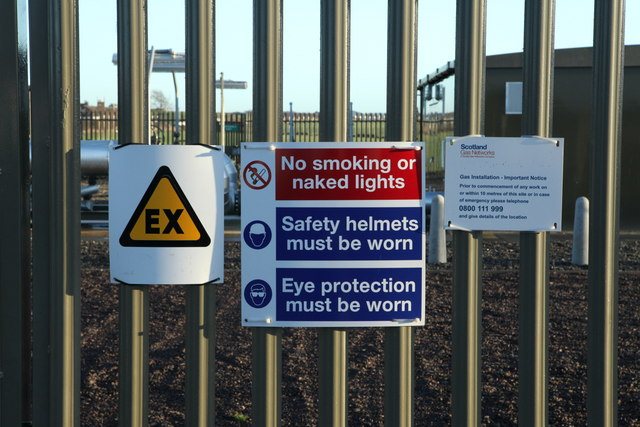
In manufacturing, safety signs are imperative to avoid unnecessary injuries. Each sign has its own purpose and has regulations it must meet to stay compliant with the Occupational Safety and Health Administration (OSHA). These signs are one of the most effective ways to communicate important information such as warnings, safety and health information. They perform a role in warning people of danger when a person cannot stay in the area to do the task.

Types of Safety Signs
To best communicate with people, safety signs come in different colors, each with their own meaning. The four main colors are red, green, yellow and blue, with each describing a different danger level or type of warning.
- Red. This color is used to indicate the highest level of danger and is typically used for evacuation information for emergencies, danger alarms and identifying equipment for use in a fire.
- Yellow. This color typically indicates that people should proceed with caution as opposed to imminent danger.
- Blue. This color is to indicate information should be used as mandatory instructions. Examples include wearing goggles or a hard hat to enter the location.
- Green. This color usually indicates where first aid kits are located or emergency escapes including exits. However, this color is not used for dangerous situations.
Benefits
The benefits of safety signage go beyond keeping everyone safe. They can actually alleviate legal issues before they come up. Under OSHA, there are rules, regulations and specifications for safety signage, especially in workplaces that have inherent dangers. Construction sites and manufacturing warehouses have the most regulations but even stock rooms in a retail store are subject to the regulations.
These regulations include the colors listed above. If a fire sign is created in blue, the business could be subject to a fine. Similarly, not properly placing signage can also lead to fines. Placement can be done mostly using common sense. For instance, if danger is in a room that is blocked off with a door, the signage should be on the door to warn people of the danger prior to entering the room. The same holds true for construction sites. Warnings of falling debris and needing a hard hat needs to be communicated before a person is at the construction site, as precautions need to be taken.
If you are considering safety signs but are unsure of where to start, contact us today. Our team will help design the perfect signs to fit your individual needs.






